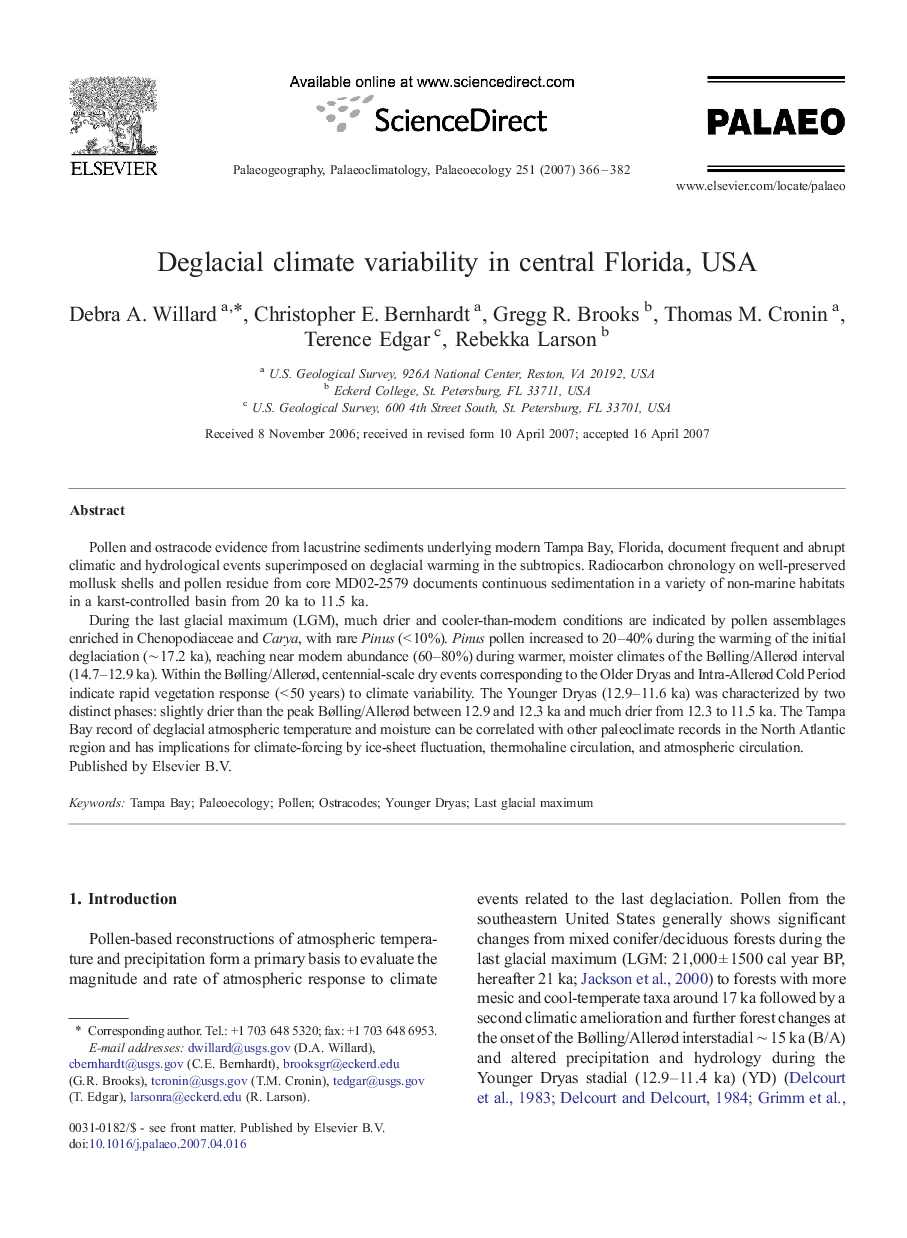| Article ID | Journal | Published Year | Pages | File Type |
|---|---|---|---|---|
| 4468889 | Palaeogeography, Palaeoclimatology, Palaeoecology | 2007 | 17 Pages |
Pollen and ostracode evidence from lacustrine sediments underlying modern Tampa Bay, Florida, document frequent and abrupt climatic and hydrological events superimposed on deglacial warming in the subtropics. Radiocarbon chronology on well-preserved mollusk shells and pollen residue from core MD02-2579 documents continuous sedimentation in a variety of non-marine habitats in a karst-controlled basin from 20 ka to 11.5 ka.During the last glacial maximum (LGM), much drier and cooler-than-modern conditions are indicated by pollen assemblages enriched in Chenopodiaceae and Carya, with rare Pinus (< 10%). Pinus pollen increased to 20–40% during the warming of the initial deglaciation (∼ 17.2 ka), reaching near modern abundance (60–80%) during warmer, moister climates of the Bølling/Allerød interval (14.7–12.9 ka). Within the Bølling/Allerød, centennial-scale dry events corresponding to the Older Dryas and Intra-Allerød Cold Period indicate rapid vegetation response (< 50 years) to climate variability. The Younger Dryas (12.9–11.6 ka) was characterized by two distinct phases: slightly drier than the peak Bølling/Allerød between 12.9 and 12.3 ka and much drier from 12.3 to 11.5 ka. The Tampa Bay record of deglacial atmospheric temperature and moisture can be correlated with other paleoclimate records in the North Atlantic region and has implications for climate-forcing by ice-sheet fluctuation, thermohaline circulation, and atmospheric circulation.
